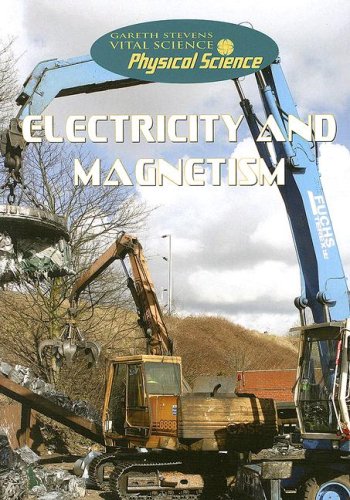-
Forces and Motion
Robert Snedden
Library Binding (Gareth Stevens Pub Secondary Lib, Jan. 12, 2007)Explores how forces and motion are related, covering such topics as inertia, friction, speed, acceleration, pressure, and gravity. X
X
-
The Nature of Matter
Anna Claybourne
Library Binding (Gareth Stevens Pub Secondary Lib, Jan. 12, 2007)Discusses matter, from atoms and elements and how they bond to the properties of solids, liquids, and gases. Z+
Z+
-
Biomes and Ecosystems
Barbara J Davis Ph.D., Suzy Gazlay
Paperback (Gareth Stevens Publishing, Jan. 1, 2007)Gareth Stevens Vital Science books are designed to help prepare students for NCLB science testing by reinforcing key concepts across the science curriculum. The six volumes in Earth Science use clear language and a variety of photographs, illustrations, and diagrams to help students understand the properties of rocks, soils, water, gases, and fossils. Weather, biomes and ecosystems, and earth's core and crust are also covered, making this a comprehensive and indispensable resource. Each book in the series features: - Concepts that support National Science Education Standards (NSES) and state standards- Text developed in consultation with a science curriculum expert- Clear explanations of key scientific concepts- Diagrams, maps, and other illustrations that enhance understanding- A glossary of key terms Z
Z
-
Transfer of Energy
Simon de Pinna, Suzy Gazlay
Paperback (Gareth Stevens Pub Secondary Lib, Jan. 1, 2007)Explores the forms energy takes, including heat and the electromagnetic spectrum, discusses how energy is transferred between objects and forms, and describes the properties of the different types of energy. X
X
-
Electricity and Magnetism
Steve Parker
Paperback (Gareth Stevens Pub Secondary Lib, Jan. 12, 2007)Describes what electricity is and how it is generated, stored, and used; explains what magnets are and how magnetism works; and discusses how electricity can be used to create magnets. X
X
-
Classifying Living Things
Darlene R. Stille
Paperback (Gareth Stevens Pub Secondary Lib, July 15, 2007)Examines the ways that living things are classified into groups according to their characteristics.
-
The Nature of Matter
Anna Claybourne
Paperback (Gareth Stevens Pub Secondary Lib, Jan. 12, 2007)Discusses matter, from atoms and elements and how they bond to the properties of solids, liquids, and gases. T
T
-
Chemical Reactions
Simon De Pinna
Paperback (Gareth Stevens Pub Secondary Lib, Jan. 12, 2007)Introduces chemical reactions, covering how atoms, compounds, and mixtures form acids, bases, and salts and what happens when these come in contact with each other under certain conditions. W
W
-
Transfer of Energy
Simon De Pinna
Library Binding (Gareth Stevens Pub Secondary Lib, Jan. 12, 2007)Explores the forms energy takes, including heat and the electromagnetic spectrum, discusses how energy is transferred between objects and forms, and describes the properties of the different types of energy. X
X
-
Chemical Reactions
Simon De Pinna
Library Binding (Gareth Stevens Pub Secondary Lib, Jan. 12, 2007)Introduces chemical reactions, covering how atoms, compounds, and mixtures form acids, bases, and salts and what happens when these come in contact with each other under certain conditions. W
W
-
Electricity and Magnetism
Steve Parker
Library Binding (Gareth Stevens Pub Secondary Lib, Jan. 12, 2007)Describes what electricity is and how it is generated, stored, and used; explains what magnets are and how magnetism works; and discusses how electricity can be used to create magnets. X
X
